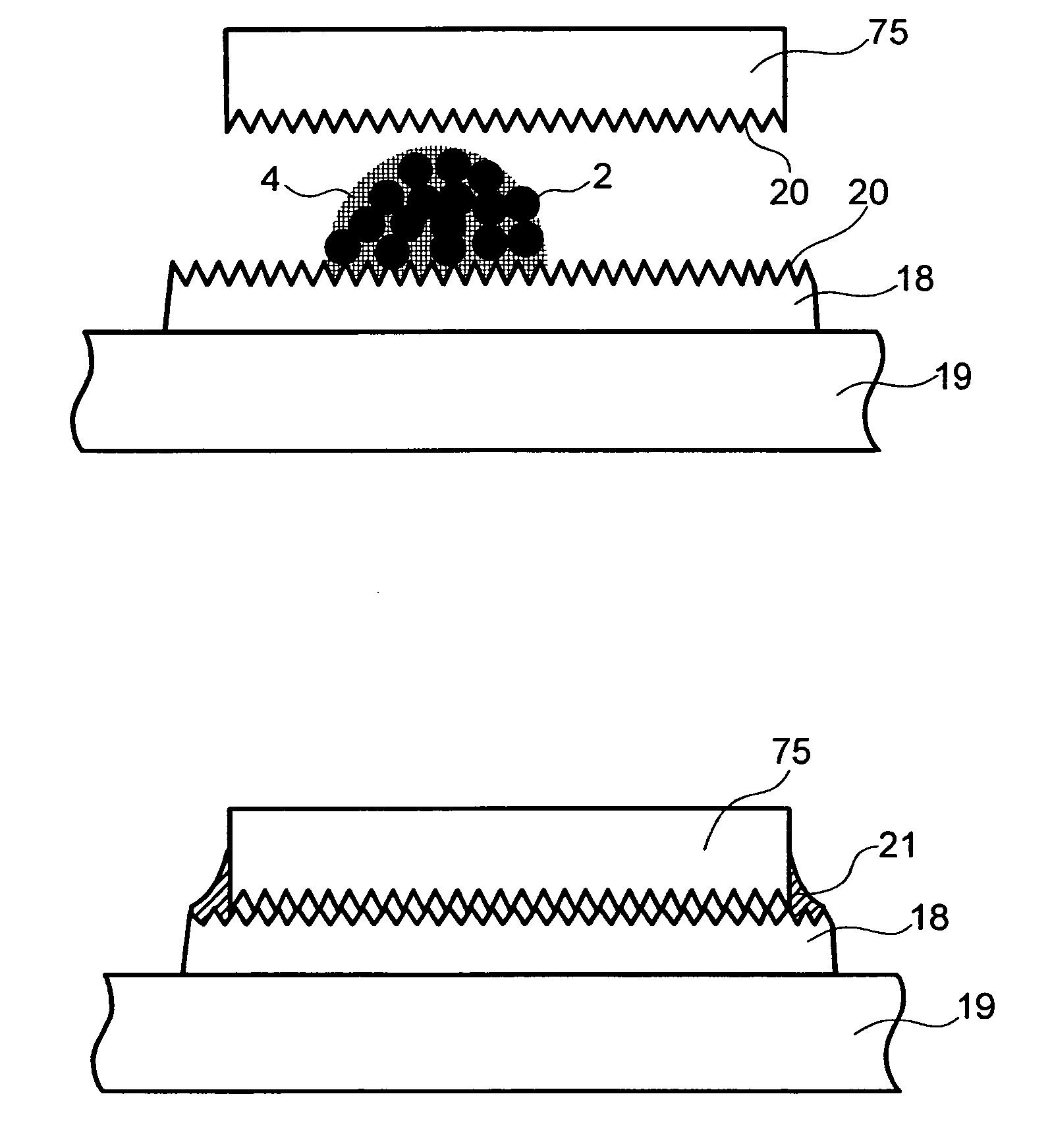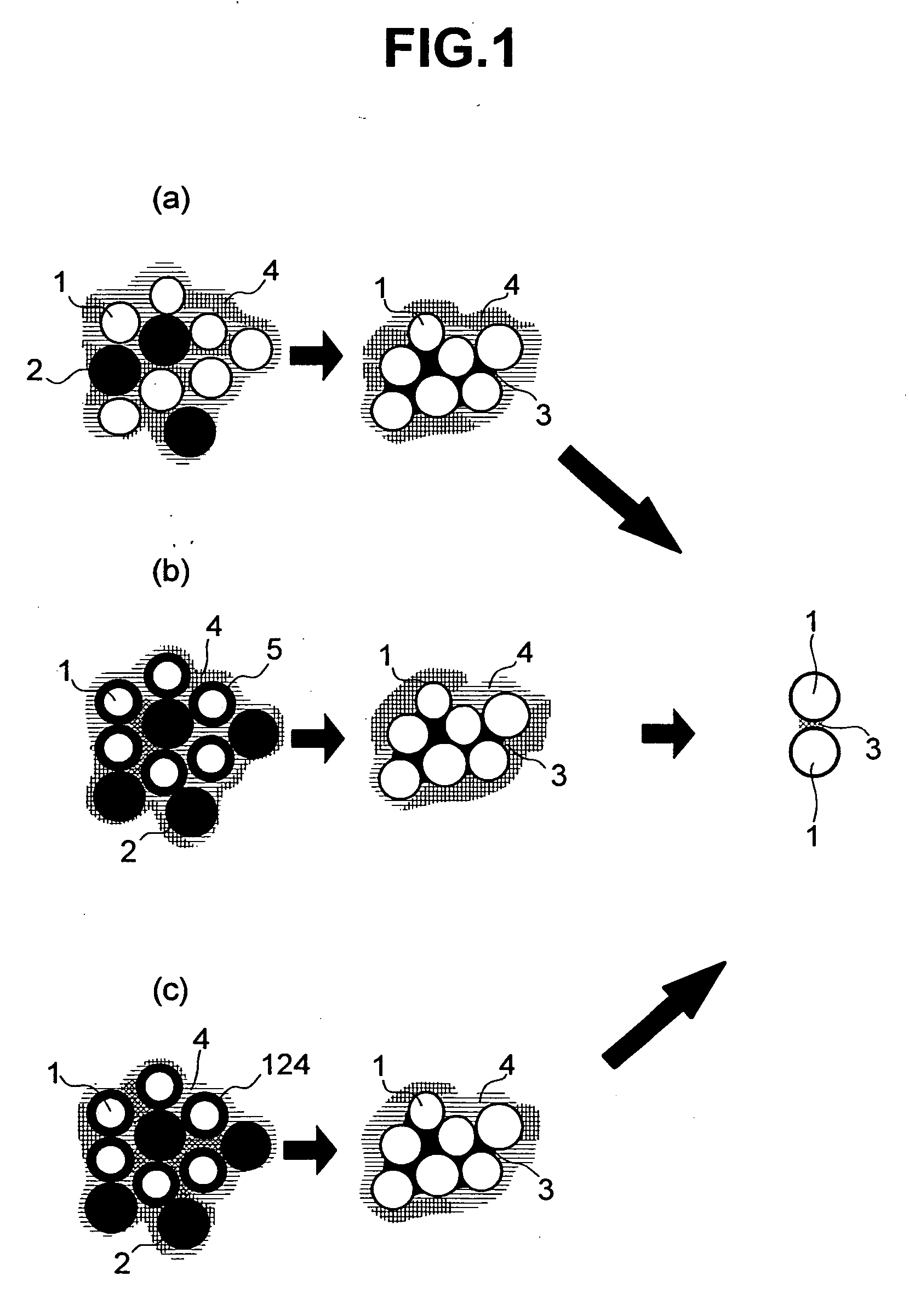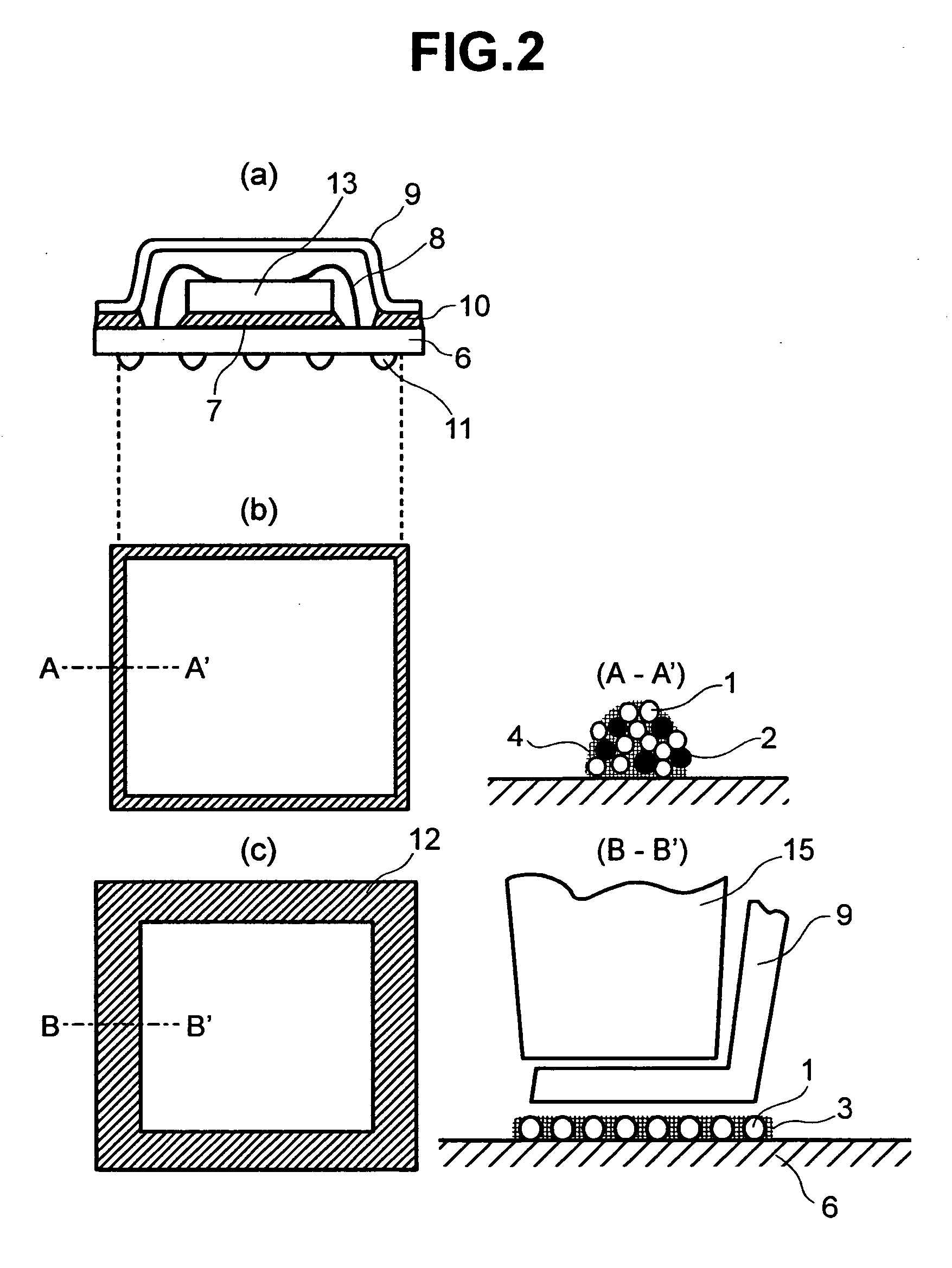Electronic device
a technology of electronic devices and chip parts, applied in the field of electronic devices, can solve the problems of reducing the melting point of solder, unable to avoid the remelting of soldered parts of chip parts in the module, etc., and achieve the effect of low sn flow into the interface of chip parts and easy cutting
- Summary
- Abstract
- Description
- Claims
- Application Information
AI Technical Summary
Benefits of technology
Problems solved by technology
Method used
Image
Examples
embodiment 1
[0056]FIG. 1(a) to FIG. 1(c) show the concept of a bonding structure according to the invention. This drawing also shows the pre-soldering condition and the post-soldering condition. FIG. 1(a) shows an example that uses a paste in which Cu balls 1 with a particle size of about 30 μm (or balls of Ag, Au, Cu—Sn alloys or the like) and Sn-base solder balls 2 (melting point: 232 degrees centigrade) with a particle size of about 30 μm are appropriately dispersed in small quantities via a flux 4. When this paste is subjected to reflow at a temperature of not less than 250 degrees centigrade, Sn-base solder balls 2 melt, a molten Sn 3 spreads such that molten Sn 3 wets Cu balls 1 and is distributed relatively uniformly between Cu balls 1. Thereafter, Cu balls 1 and molten Sn 3 react with each other so that Cu balls 1 are connected to each other with the aid of compounds of Cu and Sn (mainly Cu6Sn5). The particle sizes of Cu balls 1 and Sn-base solder balls 2 are not limited to the above-me...
embodiment 2
[0075] In FIG. 2(a), a semiconductor device 13 is bonded to a junction substrate 6 using an Au-20Sn solder 7 or the like. After wire bonding using gold wires 8 or the like, a peripheral portion of a cap 9, which is fabricated by applying a Ni—Au plating to an Al plate, a Fe—Ni plate or the like is bonded to junction substrate 6 by reflow through a solder paste 10 of the above-mentioned non-cleaning type. In this embodiment, when the insulating characteristic is regarded as important, it is desirable to perform bonding in a nitrogen atmosphere using a solder with a flux not containing chlorine. However, when wettability cannot be ensured, encapsulation with a weak-activity rosin of the RMA type may be performed. It is not necessary to ensure the complete encapsulation or the sealing of semiconductor device 13. That is, provided that the flux has sufficient insulating characteristics, even when semiconductor device 13 is held in the presence of the flux for a long time, the semiconduc...
embodiment 3
[0081] The paste according to the invention can be also used in die bonding 7 shown in FIG. 2(a). After bonding semiconductor device 13 using the paste according to the invention, cleaning and wire bonding are performed. In the prior art, die bonding uses Au-20Sn bonding. However, in view of reliability of the Au-20Sn solder, use of Au-20Sn solder has been limited to die mounting of small chips. Further, when die bonding is performed using a paste made of a Pb-base solder, a Pb-10Sn solder and the like have been used. The bonding according to the invention is also applicable to chips having a somewhat larger area. The larger the thickness of the bonding portion, the more service life is prolonged and reliability is increased. According to the invention, it is possible to increase this thickness by using high-melting-point balls each having a larger size. When decreasing the thickness, a smaller size of particles (balls) is used. In some bonding methods, it is also possible to form a...
PUM
| Property | Measurement | Unit |
|---|---|---|
| diameter | aaaaa | aaaaa |
| thickness | aaaaa | aaaaa |
| thickness | aaaaa | aaaaa |
Abstract
Description
Claims
Application Information
 Login to View More
Login to View More - R&D
- Intellectual Property
- Life Sciences
- Materials
- Tech Scout
- Unparalleled Data Quality
- Higher Quality Content
- 60% Fewer Hallucinations
Browse by: Latest US Patents, China's latest patents, Technical Efficacy Thesaurus, Application Domain, Technology Topic, Popular Technical Reports.
© 2025 PatSnap. All rights reserved.Legal|Privacy policy|Modern Slavery Act Transparency Statement|Sitemap|About US| Contact US: help@patsnap.com



